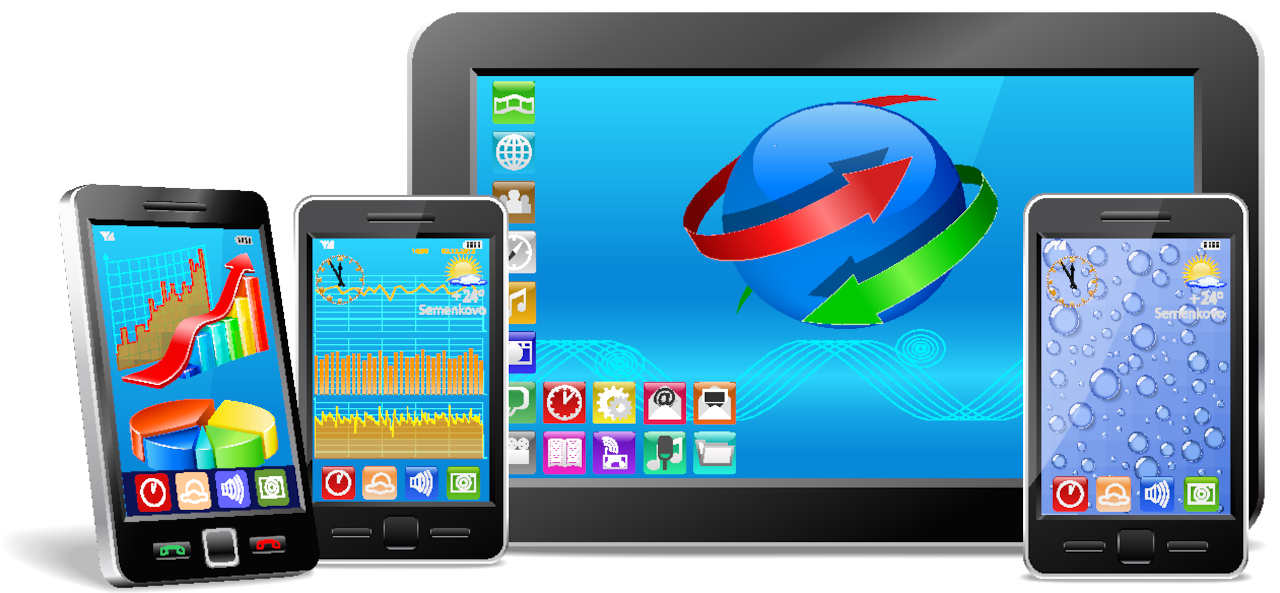Digital Tools for Schools
Making the right decisions when purchasing digital tools -- and what to do if you need to act immediately

Selecting the right digital tools for your school is never an easy task. With the wide variety of tools and products available, along with limited school budgets, making the right purchasing decision can be challenging.
Conducting a needs assessment is a necessary first step when making any decision to purchase any product, but particularly when looking at technology. When conducting a needs analysis, important questions to consider include:
- What are the needs of the school in terms of curriculum and functionality?
- What do you hope to accomplish by introducing a new tool or platform?
- Are you replacing an existing tool or product?
- Are you introducing a new opportunity for learning?
- Is the intent to substitute, augment, modify, or redefine (SAMR) what is happening in the classroom or school?
Once the need has been determined (what do you hope to do) the next step is to identify how to close the gap between the current situation and the ideal by selecting the right resources. This step involves research potential tools and products that may meet the need. During this phase, it is important to evaluate the tools and resources being considered. Here are some important questions to ask during this phase:
- What does the resource purport to do?
- Does the scope of content and functionality meet the needs you have identified?
- What are the needs of your students in terms of differentiation? Does the resource address those needs?
- Is the product accessible for ALL students and educators? Is there text-to-speech functionality? Closed captioning on videos? Transcription of audio files?
- Does the resource conform to student privacy laws and policies? United States regulations are summarized by the Office of Educational Technology, General Data Protection Regulation (GDPR) applies in the European Union.
- Is the content and interface engaging to students?
- Is the product intuitive and easy to use, or does it require extensive training?
- Is the product appropriate for the intended audience?
- Do the students and educators have access to technology (hardware and infrastructure) in and out of school to access the resource effectively and efficiently?
- How much does the product cost? Are discounts available through local or state agencies? Are there costs beyond the initial purchase? Are there additional hidden costs such as hosting or professional development for educators?
- Are there similar products that do the same thing, but in a more cost effective manner?
- How do students and teachers access the tool -- will accounts need to be created, or is there integration with existing systems?
- Are you able to “try it before you buy it” with a demo or a free trial period?
- Is support provided during implementation to answer any questions that arise?
At this stage, it may be important to gather a group of stakeholders -- educators, parents, students, administrators -- to help evaluate the options available, and to give input into whether the product would even be utilized. Incorporating all potential stakeholders in a purchasing decision helps to increase buy-in, as well as to uncover important priorities and concerns.
But What If There Isn't Time?
Despite the importance of thinking carefully about integrating technology in schools, there are times when gathering stakeholders, and thinking through decisions are just not possible. Online learning opportunities continue to grow throughout the world as schools and educators embrace digital learning opportunities by choice, however many schools and educators are finding themselves being forced to move to alternative learning options. For some, this creates a very uncomfortable question: How can students continue to learn when they can no longer go to school?
Tools and ideas to transform education. Sign up below.
Some schools already have a learning management system (LMS) in place, which may make it easier to move learning online as the educators and students are already familiar with the required technology. With limited time, and limited resources, for schools and educators that do not already use an LMS, taking the time to identify the right solution is not an option. While there are myriad high-quality solutions available, the options presented here will focus on services and resources that offer at least some functionality for free, that allow educators to move learning online in a hurry.
For schools without an LMS in place, educators can create free accounts on one of the following platforms to ensure students can connect with content. It is important to note that educators should collaborate within their buildings to determine one system for all teachers to use to ensure students aren’t asked to learn a new one for every course.
Free Learning Management Systems (LMS)
Google Classroom is available to anyone with a Google Account, even if a school does not use GSuite.
Schoology offers a basic version of their platform, with a vast array of integrations with other digital learning tools that schools and teachers already use.
Edmodo has a free learning management system that allows teacher, student, and parent accounts.
Canvas provides free accounts to educators, and a wide variety of integrations with tools educators are already using.
In addition to learning management systems, educators and schools may wish to explore a variety of tools to help with content, lesson delivery, engagement, and assessment. What follows are some (not all) available tools to get started moving your learning environment online.

Content
There exist so many tools and platforms that offer free digital content for educators. Listed here are just a few.
CK12 offers a wide variety of content and resources to help educators meet the needs of their students including open source digital textbooks, concept based learning, simulations, interactive learning experiences, and adaptive practice. CK12 offers integration with Google Classroom, Canvas, Edmodo, Schoology and other platforms. The focus on the materials is on math, science, and social studies, though there are also resources for additional subject areas.
Hippo Campus provides free educational content for a variety of subject areas for students in middle school to college. The focus is on math, science, and social science, with some ELA content.
The Library of Congress shares a wealth of primary source documents, lessons, and presentations to incorporate into the classroom. This is a good fit for history, ELA and social science courses.
Everfi has free mini courses and lessons in a variety of content areas including social and emotional learning, health and wellness, cultural literacy, and others.
PBS offers videos, interactive activities, and more for all grade levels and a variety of content areas including math, science, social studies, and engineering.
Lesson Delivery
Despite the myriad resources available, many educators prefer to deliver their own instruction to students. This list of resources provide some of the free options that allow educators to connect with their students from a distance.
Screencastify is a Chrome extension that allows educators to record their computer screen for a demonstration, or to create a narrated presentation. Free accounts allow up to 5 minutes of video.
Screencastomatic is downloadable software that works across platforms including Windows, Mac, Android, iOS, and Chrome, and allows educators to record up to 15 minutes of video with a free account. Screencastomatic also offers video editing tools and free cloud-based hosting of videos.
Educreations allows users to record interactive whiteboard presentations on an iPad. The free account is limited to basic tools, and 50 MB of storage.
ExplainEverything lets educators to record up to 3 one-minute whiteboard presentations. ExplainEverything works with iOS, Android, Chromebooks and in your browser.
FreeConferenceCall is a free web conferencing platform that allows audio, video, screen sharing, drawing, chat features, and recording for up to 1,000 participants per meeting. Participants can join by video, or by telephone. A great way to connect with students in real time, and share the recording for students who missed the call.
Curation and Collaboration
Tools that help gather a variety of resources for students to engage with are abundant. Here are three options that allow for collaboration and easy distribution of resources and materials.
Padlet allows educators and students to create interactive collaborative boards, where they can post video, audio, text, links and more. Padlet offers free accounts, as well as school level subscriptions.
Wakelet is a digital curation tool that allows educators to create collections of resources such as video, image, weblinks, PDFs, and more. Wakelet also allows for collaborative collections of resources. Wakelet can be used to create digital portfolios, Digital BreakoutEDU activities, hyperdocs, and more.
Seesaw is a digital portfolio platform that allows educators to create activities for students to complete, and allows students to participate by taking pictures, drawing, recording videos and more. A free Seesaw account allows educators up to 10 active classes.
Interactive Experiences
While delivering content is one of the key focuses of many educators, engagement, and ultimately, learning, requires a two-way exchange. These tools engage students using embedded assessments and other learning tasks that go beyond listening to a lecture.
Flipgrid is a 100% free platform that allows educators to create interactive video discussions for their students. Educators create a “grid” for their course, and create “topics” for students to respond to via video. Videos are limited to 5 minutes each, and students then respond to each other allowing the social interaction needed in a 21st-century school environment. Flipgrid does not require students to have an email address, and there are thousands of example topics available to get you started.
PearDeck is an add-on for Google Slides and Microsoft 365 PowerPoint that allows educators to embed assessments into a presentation. PearDeck allows for synchronous (everyone at the same time) and asynchronous (everyone at different times) presentations, and engages students through the use of embedded questions. A free Peardeck account allows for basic slide types: multiple choice, free text, number, and website, which allows users to embed a website in the presentation. When coupled with a narrated presentation, the combination allows for an engaging and interactive experience.
Deck.Toys is a platform that allows you to design interactive lessons as quests students embark upon. Educators are able to incorporate presentations, activities, videos, links, and more. Assess student learning through activities such as drawing, short text responses, polls, and others. Embed study sets like flashcards, matching games, word search and more.
EdPuzzle allows educators to add interactive multiple choice and open ended questions, as well as notes from the instructor in the form of text or audio to videos. Embedded assessments help educators determine if students are truly engaging in the material presented.
Playposit lets educators add a wide variety of interactions to videos including questions (poll, free response, discussion, fill-in-the-blank and more), annotations (such as additional web links), and offers templates to help get educators started.
It is also important to remember that not all students have technology, or access to the internet at home. Whatever you create for your students, be sure they will be able to access it. It is also important to consider the needs of all students. When creating audio or video files, it is important to ensure that they are accessible. This means creating verbatim transcripts of whatever audio is present, and describing images so that students with visual impairments do not lose out on important information.
Shannon Mersand is a lecturer in the fully online Information Science School Library Program at the University at Albany. She has been working with educators PreK-University to move instruction to an online format for more than 15 years.
